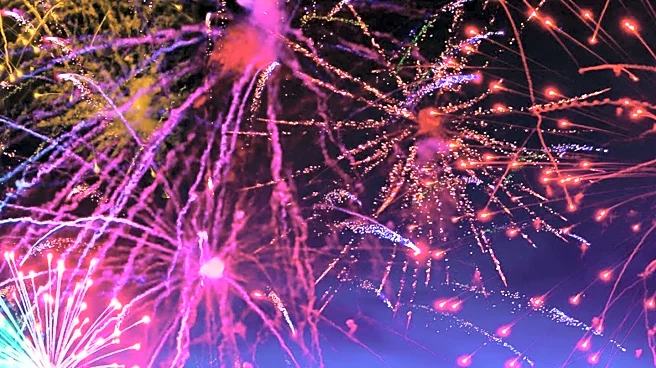What's Happening?
The Unconformity festival, a biennial arts and culture event in Queenstown, Tasmania, is showcasing its most ambitious program to date. The festival, which evolved from a community-run art event in 2016,
is the only one to receive multi-year federal funding in late 2023. This year's edition features 60 place-responsive events with 121 artists, focusing on the resilience of the local environment despite historical extractive practices. The festival's artistic director, Loren Kronemyer, emphasizes site-specific programming, with works like Bridget Baskerville's copper plate etching using acidic river water and Luke George's performance art developed through artist residencies.
Why It's Important?
The Unconformity festival serves as a model for how culture can lead recovery in regions affected by environmental degradation. By nurturing local talent and emphasizing site-specific art, the festival highlights the adaptability and resilience of the Queenstown community. This approach not only supports local artists but also attracts national and international attention, potentially boosting tourism and economic activity in the area. The festival's success amid funding challenges underscores the importance of cultural initiatives in fostering community resilience and environmental awareness.
What's Next?
The festival continues to develop its program through creative development initiatives and artist residencies, aiming to further integrate art with the local environment. As the festival progresses, it may inspire similar cultural events in other regions facing environmental challenges. The focus on site-specific art could lead to increased collaboration between artists and environmental scientists, fostering innovative solutions to ecological issues. The festival's impact on local tourism and economy may also encourage further investment in cultural and environmental projects.
Beyond the Headlines
The Unconformity festival highlights the ethical and cultural dimensions of art in environmental recovery. By showcasing works that respond to the local landscape, the festival raises awareness about the long-term impacts of extractive practices and the importance of sustainable development. The event also fosters a sense of community pride and identity, encouraging residents to engage with their environment in meaningful ways. This cultural approach to environmental recovery may influence policy decisions and inspire global conversations about the role of art in addressing ecological challenges.











